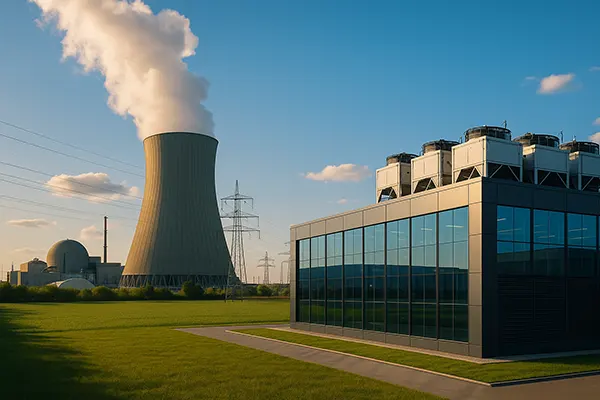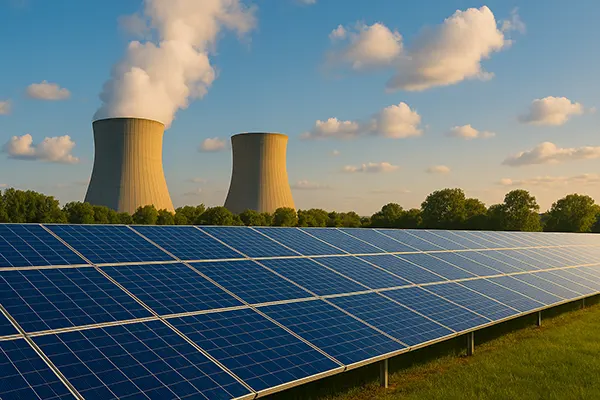How Tech Giants Are Revitalising Old Nuclear Plants for Low-Carbon Data Centres

By 2025, the world’s largest technology companies have intensified efforts to align their operations with ambitious climate goals. One emerging strategy is the revival of ageing nuclear power plants to supply clean, reliable electricity to data centres. These facilities, which underpin cloud services, artificial intelligence systems, and global connectivity, demand vast amounts of continuous power. With renewable sources sometimes limited by intermittency, nuclear energy offers a dependable low-carbon alternative that can run 24/7, reducing reliance on fossil fuels while supporting digital growth.
The Strategic Role of Nuclear Power in Digital Infrastructure
Nuclear plants, particularly those constructed in the 1970s and 1980s, were once considered outdated due to high operating costs and complex regulatory requirements. However, with upgrades in safety systems, improved fuel efficiency, and modernised cooling technologies, many are now capable of meeting strict environmental standards. These upgrades make them attractive to tech firms that require stable, long-term energy contracts.
In the United States, companies like Microsoft and Google have entered agreements with utilities to secure power from refurbished nuclear stations. Similarly, in Europe, initiatives in France and Finland have focused on extending plant lifespans to feed data centre hubs. These partnerships not only ensure steady electricity supply but also enhance the public image of corporations as leaders in sustainability.
The decision to rely on nuclear power is also driven by geopolitical concerns. With energy markets experiencing volatility, nuclear energy offers predictable costs and a level of independence from fossil fuel imports, enabling companies to plan operations with greater certainty.
Balancing Sustainability and Safety
Critics of nuclear revival often point to the risks associated with radioactive waste and potential accidents. However, advancements in reactor design and waste storage methods have significantly reduced these dangers. Modernised safety protocols, automated monitoring systems, and enhanced physical barriers contribute to a safer operational environment.
Furthermore, international regulatory bodies have implemented rigorous inspection regimes, ensuring that older plants meet contemporary safety benchmarks. This reassures both the public and corporate stakeholders that energy production remains secure and responsible.
From a sustainability perspective, nuclear power’s near-zero operational emissions make it one of the most effective tools for decarbonising the tech sector. By coupling nuclear electricity with other renewable sources, companies can create a diversified energy mix that supports their net-zero objectives.
Technological Upgrades Driving Plant Modernisation
Modernising an ageing nuclear plant involves more than basic repairs. It requires the integration of digital control systems, AI-driven predictive maintenance, and improved reactor materials that extend operational lifespans. These technologies reduce downtime, lower maintenance costs, and improve efficiency, making nuclear power more economically viable.
Artificial intelligence plays a critical role in monitoring plant conditions in real time, identifying anomalies before they escalate into operational issues. This predictive capability not only boosts safety but also maximises output, ensuring data centres receive a constant power supply.
Upgraded turbine systems, enhanced cooling infrastructure, and low-enriched uranium fuel have also become standard in refurbished facilities. These measures increase output capacity while adhering to stringent safety and environmental regulations.
Partnerships Between Tech Firms and Energy Providers
Securing power from nuclear plants often requires long-term agreements between energy providers and technology corporations. These partnerships can span decades, guaranteeing consistent revenue for plant operators while offering tech companies price stability and energy security.
In Canada, for example, major data centre operators have entered into contracts with the Bruce Power facility in Ontario, ensuring clean energy supply for AI and cloud computing services. In Asia, Japanese utilities are working with domestic tech firms to restart and upgrade reactors for similar purposes.
Such collaborations are mutually beneficial: energy providers receive the investment needed for upgrades, while tech companies solidify their commitment to carbon reduction through verifiable, low-emission power sources.

Global Trends and Future Outlook
The move towards revitalising nuclear infrastructure for digital operations is part of a broader global energy transition. Countries with robust nuclear capabilities, such as France, South Korea, and the United States, are leading this integration, viewing it as essential for sustaining both economic growth and climate commitments.
By 2025, public perception of nuclear energy has shifted, particularly in regions where climate change impacts are becoming increasingly severe. Surveys in the EU and North America indicate growing acceptance of nuclear power as a necessary component of the clean energy mix, especially for industries with uninterruptible power needs.
Future developments are expected to include small modular reactors (SMRs), which can be located closer to data centres and built faster than traditional plants. These smaller units promise lower initial investment, enhanced safety, and flexibility in scaling operations.
Challenges Ahead
Despite its advantages, the revival of nuclear power for data centres is not without obstacles. High upfront costs, complex regulatory frameworks, and the long timelines required for plant refurbishment can delay projects. Political opposition in certain countries also poses risks to expansion plans.
Another challenge lies in waste management, as public concerns remain strong despite technological improvements. Long-term storage solutions and transparent communication strategies are essential to maintaining trust and regulatory compliance.
Nevertheless, with climate targets tightening and data demand surging, nuclear energy’s role in powering the digital economy is likely to expand. Tech giants that invest early in these partnerships may gain a strategic advantage in both sustainability performance and operational resilience.


